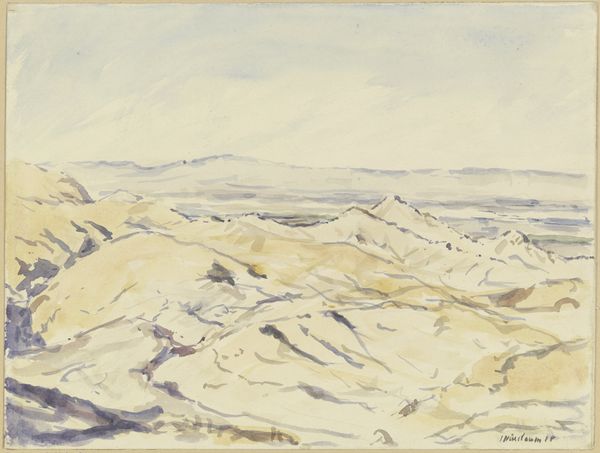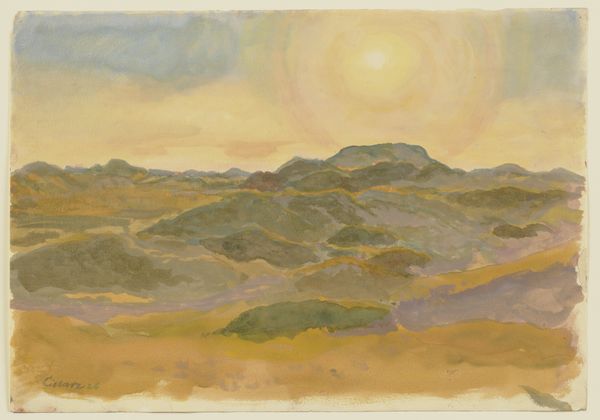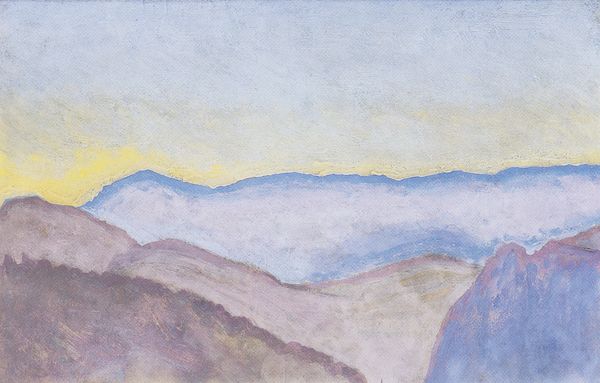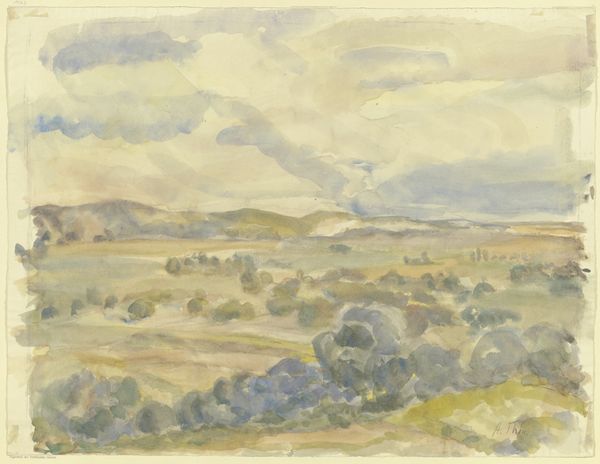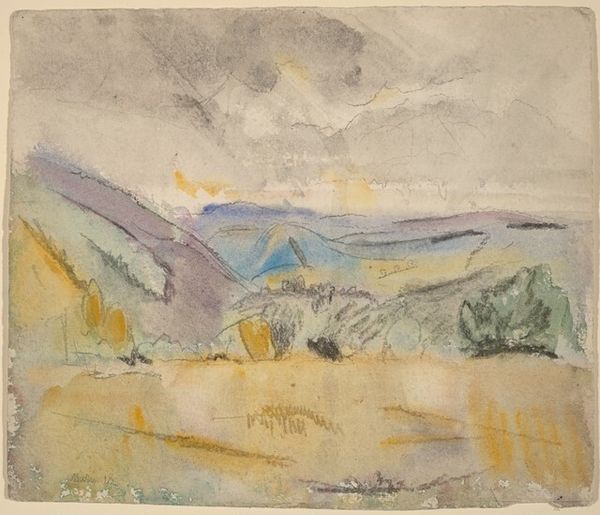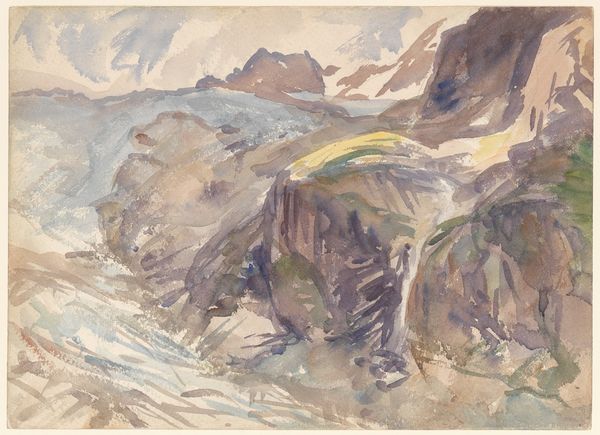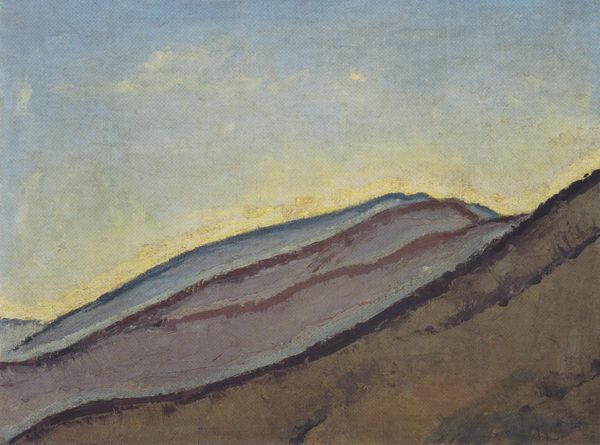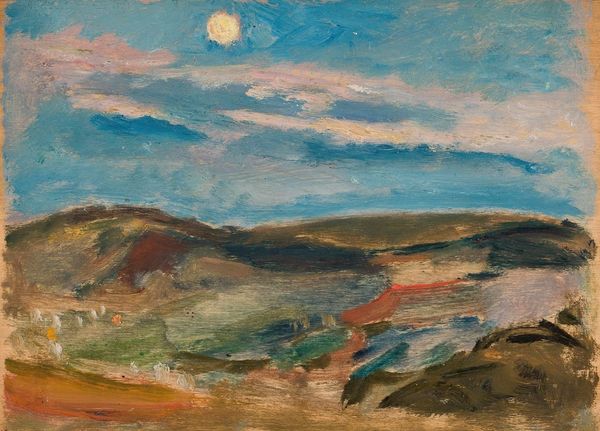
Copyright: Public Domain: Artvee
Editor: This watercolour, 'Sunset', by John Singer Sargent, created between 1905 and 1906, strikes me as incredibly serene, almost dreamlike. It's interesting how the loose brushstrokes suggest the landscape, rather than defining it precisely. How do you interpret this work? Curator: Sargent, often celebrated for his portraiture, was also deeply invested in exploring the nuances of light and its impact on landscape, particularly through plein-air painting. The apparent simplicity hides a deeper commentary. What societal factors do you think allowed Sargent the freedom to capture such fleeting moments en plein air? Editor: That's a great point! It makes me consider the privileged position Sargent held, enabling him to pursue these artistic endeavors freely. Do you think this context informs our viewing experience? Curator: Absolutely. We can interpret the landscape as not just a scene, but also a statement about leisure and access to nature. His impressionistic style, while aesthetically pleasing, also mirrors the ephemeral nature of these experiences for the privileged class. The loose brushwork isn’t just technique, it speaks to the fleeting opportunities for observation afforded by his social standing. Where do you think we can draw lines to feminism within his artworks? Editor: Interesting. I hadn't considered it in terms of access. Thinking about Sargent's portraits too, how much did his positioning affect the kinds of narratives he would tell? Curator: Exactly. Consider how Sargent represents his subjects, often from a position of power, and the choices he makes in portraying their identities. What social statements, intended or unintended, are embedded within that dynamic? Editor: This has completely shifted my perspective! I was so focused on the visual harmony that I overlooked the potential societal undercurrents. Curator: It's in those very undercurrents that we find the artwork truly resonates with history, prompting questions about who gets to represent whom and how. It serves as a vital lens through which to dissect both art and the society that shaped it.
Comments
No comments
Be the first to comment and join the conversation on the ultimate creative platform.
